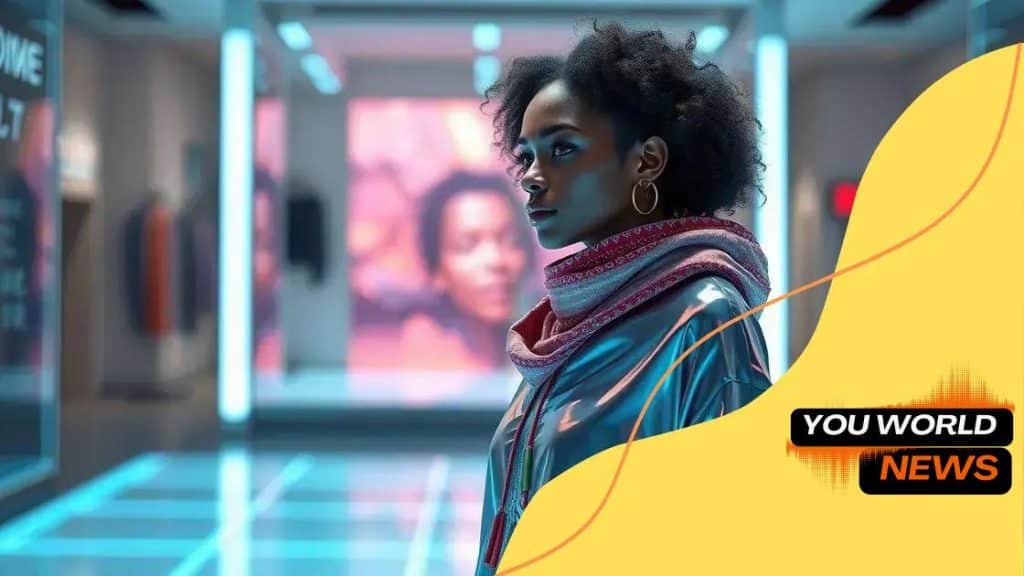Digital fashion: Clothing you can’t physically wear

Digital fashion refers to clothing designed for virtual environments, promoting creativity, sustainability, and self-expression, while eliminating the need for physical materials and reducing environmental impact.
Digital fashion: Clothing you can’t physically wear is reshaping our relationship with style and technology. Have you ever wondered how virtual garments influence your self-expression? Dive in as we uncover their evolving role in our lives.
What is digital fashion?
Digital fashion refers to clothing and accessories designed for virtual environments. This innovative concept merges art and technology, allowing designers to create garments that exist only in the digital realm. You might find yourself wondering how this unique style is taking over the fashion world.
At its core, digital fashion leverages 3D modeling and computer-generated imagery (CGI) to create stunning visual experiences. Unlike traditional fashion, which relies on physical materials, digital designs can be manipulated and showcased in extraordinary ways.
Key Elements of Digital Fashion
- Virtual clothing: outfits that can be worn by avatars or used in virtual try-ons.
- Augmented reality: technology that blends digital clothing with real-world environments.
- Sustainable practices: reducing waste and carbon footprints by eliminating physical production.
- Design freedom: no limits on creativity, enabling unique styles that wouldn’t be possible in reality.
Digital fashion isn’t just a trend; it’s a glimpse into the future of style. Many brands are now integrating virtual designs into their collections, allowing consumers to embrace their digital identities. Online platforms have emerged where users can shop for exclusive garments, providing a new avenue for personal expression.
Imagine attending a virtual event in breathtaking digital attire that embodies your style. This integration of technology with fashion creates limitless possibilities for creators and wearers alike. As we advance further into the digital age, digital fashion will play a pivotal role in reshaping how we perceive clothing, pushing the boundaries of self-expression and creativity.
The rise of virtual clothing
The rise of virtual clothing has dramatically changed the fashion landscape. As technology advances, more people are embracing digital attire, which offers unique advantages. This movement reflects a growing trend where fashion enthusiasts seek innovative ways to express themselves online.
Virtual clothing allows users to experiment with styles without the physical constraints of traditional garments. With the help of augmented reality and digital platforms, consumers can try on outfits virtually before purchasing. This experience is both fun and convenient, opening doors for personalized fashion choices.
Why Virtual Clothing is Gaining Popularity
- Cost-effectiveness: virtual designs often come at a lower price point compared to physical items.
- Sustainability: embracing digital fashion reduces waste and the environmental impact of clothing production.
- Endless creativity: designers can create limitless styles, unrestricted by fabric or physical form.
- Customization: consumers can personalize their digital outfits to suit their tastes.
As brands recognize this shift, they are investing in virtual fashion lines and collaborating with digital creators. These partnerships not only enhance brand visibility but also attract tech-savvy customers keen on exploring new styles. The fashion world is evolving, and digital clothing is at the forefront of this transformation.
Social media platforms also play a crucial role in popularizing virtual clothing. Influencers and content creators showcase their digital outfits, inspiring their followers to dive into this unique fashion experience. This trend continues to grow as more people spend time in virtual spaces, blending their real and digital lives.
How digital fashion impacts identity

Digital fashion plays a critical role in shaping our identities in the modern world. As people increasingly express themselves through virtual avatars and online personas, the clothing they choose becomes a vital aspect of their identity. Through these digital outfits, individuals can showcase their personal style and creativity without the limitations of physical clothing.
In virtual spaces, clothing can convey a message about who we are. It influences how we are perceived by others in these environments. As such, garments are not just fabrics; they are expressions of personality. The choices we make in digital fashion can reflect our moods, beliefs, and values.
The Influence of Avatars on Self-Expression
- Representation: digital clothing allows users to create avatars that resemble their individual identities.
- Transformative experiences: people can experiment with various styles without the fear of judgment.
- Community: online platforms foster shared interests, allowing users to connect over similar fashion choices.
- Accessibility: virtual fashion opens doors for diverse identities that traditional fashion might overlook.
As individuals engage with digital clothing, they also become part of a larger community. Online platforms and social networks provide spaces where they can share their styles and gain inspiration from others. This interaction helps to create a sense of belonging and shared identity among users in digital spaces.
Furthermore, many fashion brands now recognize the power of identity in the digital realm. They are crafting collections specifically for virtual environments, allowing consumers to explore their identity through fashion. This evolution highlights how intertwined digital fashion has become with our self-perception and community ties.
Sustainability in digital fashion
Sustainability in digital fashion is becoming a significant topic as the fashion industry seeks to reduce its environmental impact. Unlike traditional fashion, which relies heavily on resource-intensive production, digital fashion offers an eco-friendly alternative. As more designers and brands explore this space, the benefits of going digital become increasingly clear.
One key advantage is that virtual clothing eliminates the need for physical materials, which helps to reduce waste. Digital designs require no fabric, dye, or shipping, thus cutting down on pollution and carbon emissions. This approach not only minimizes the environmental footprint but also encourages creativity without the constraints of physical production.
Benefits of Digital Fashion Sustainability
- Waste reduction: fewer physical garments lead to less waste in landfills.
- Resource conservation: eliminating the need for raw materials decreases ecological strain.
- Lower carbon emissions: reduced shipping and manufacturing cuts energy use.
- Innovative practices: digital fashion encourages brands to implement sustainable technologies.
As consumers become more aware of the impact of their choices, they increasingly seek out sustainable options. Digital fashion resonates with this desire by providing stylish alternatives that align with eco-conscious values. Wearing virtual clothing can empower users to express their style while highlighting their commitment to sustainability.
Furthermore, major fashion brands are beginning to embrace sustainability by launching digital collections. These initiatives not only appeal to environmentally aware consumers but also set a precedent for future industry practices. By prioritizing sustainability, digital fashion is leading a movement that challenges conventional norms and inspires a more responsible approach to style.
Future trends in virtual clothing
Future trends in virtual clothing are expected to evolve rapidly as technology continues to advance. As more consumers become familiar with digital garments, designers are exploring new and innovative ways to create clothing that fits seamlessly into our digital lives. This shift is not just about clothing but also about enhancing the overall experience of fashion in virtual environments.
One exciting trend is the increasing use of augmented reality (AR) in fashion. This technology allows users to see how digital clothing would look on them in real time. With AR, virtual try-ons will become more popular, making shopping an interactive and engaging experience. This technology can drive sales and offer a novel way for consumers to connect with brands.
Key Trends to Watch
- AI-Powered Designs: Artificial intelligence will play a significant role in creating personalized clothing recommendations based on user preferences.
- Collaborations with Game Developers: Fashion brands will team up with gaming companies to launch exclusive digital clothing lines.
- Integration with Digital Twins: Users will have digital representations of themselves, allowing for a more personalized fashion experience in virtual spaces.
- Sustainable Virtual Fashion: Brands will increasingly focus on creating eco-friendly digital clothing that reduces environmental impact.
As these trends unfold, virtual clothing will become an integral part of our everyday lives. With its ability to provide limitless options for self-expression and creativity, digital fashion will continue to attract interest from both consumers and designers alike. Additionally, social media platforms will amplify the visibility of these trends, influencing how users engage with fashion in a digital context.
Overall, the future of virtual clothing promises to blend technology, creativity, and sustainability, reshaping our understanding of style in the digital age. The evolution of virtual fashion signals a promising horizon, where possibilities are endless, and personal style can be explored like never before.
FAQ – Frequently Asked Questions about Digital Fashion
What is digital fashion?
Digital fashion refers to clothing and accessories designed for virtual environments, allowing style without physical constraints.
How does digital fashion promote sustainability?
Digital fashion reduces waste and environmental impact by eliminating the need for physical materials and manufacturing.
Can I wear digital clothing in real life?
Digital clothing is primarily for virtual environments, but some overlays and AR designs can connect digital and physical experiences.
What are the future trends in digital fashion?
Future trends include AI-driven personalization, augmented reality shopping, and creative collaborations between brands and the gaming industry.





